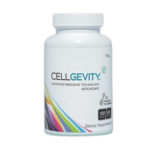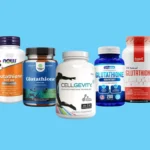
Have you ever wondered why some people seem to age gracefully while others struggle with chronic health issues early in life? The answer often lies in something we rarely think about: cellular health. Every day, our cells face challenges from oxidative stress, toxins, and environmental damage. Over time, this can lead to a cellular breakdown, leaving us vulnerable to ageing and disease.
But what if there was a way to help our cells recover? That’s where Cellgevity, a popular supplement, steps into the spotlight. Marketed as a powerful solution to combat cellular damage and boost glutathione levels, Cellgevity claims to work at the core of cellular health.
In this blog, we’ll take a closer look at the evidence behind these claims. Does Cellgevity truly have the potential to reverse cellular damage? And how does it stack up in terms of scientific backing?
If you’re here to uncover the truth about Cellgevity and whether it can deliver on its promises, you’re in the right place. Our goal is to provide a balanced, evidence-based perspective that addresses your curiosity and helps you make informed decisions about your health.
Let’s explore the science and the facts behind Cellgevity’s bold claims.
Understanding Cellular Damage
To grasp the potential of Cellgevity in reversing cellular damage, it’s essential first to understand what cellular damage means. Our cells are like tiny factories, constantly working to keep us alive and healthy. However, just like any machine, they’re prone to wear and tear, especially when exposed to environmental stressors, toxins, and poor lifestyle choices.
What is Cellular Damage?
Cellular damage refers to any harm caused to the building blocks of our cells. This can affect our cell membranes’ DNA, proteins, or lipids. These components are vital for normal cellular function, and when they are damaged, they can lead to dysfunction, disease, and accelerated ageing.
Types of Cellular Damage
1. DNA Damage
Our DNA acts as the instruction manual for how our cells grow, repair, and function. When DNA is damaged by radiation, environmental toxins, or errors during cell division, it can disrupt normal processes. If not repaired, DNA damage can lead to mutations, which increase the risk of diseases like cancer and impact long-term health.
2. Protein Damage
Proteins are the workhorses of our cells, handling everything from metabolism to repair. Unfortunately, proteins are vulnerable to damage through processes like oxidation (caused by free radicals) and glycation (when sugar molecules attach to proteins). Damaged proteins lose their ability to perform critical tasks, leading to cellular dysfunction and problems in enzyme activity and communication between cells.
3. Lipid Peroxidation
Lipids are a key part of cell membranes, keeping the structure intact and controlling what enters or exits the cell. However, when free radicals attack these lipids—a process called lipid peroxidation—it weakens the cell membrane. This damage can cause inflammation and has been linked to serious conditions like cardiovascular disease and neurodegenerative disorders such as Alzheimer’s.
The Role of Aging
As we age, our bodies naturally accumulate cellular damage. This is partly due to a decrease in the body’s ability to repair damage efficiently and partly due to prolonged exposure to environmental stressors. Over time, the accumulation of cellular damage contributes to:
- Aging symptoms like wrinkles, slower metabolism, and reduced energy levels.
- Increased vulnerability to age-related diseases such as arthritis, heart disease, and dementia.
The good news is that research suggests we can slow down, or even reverse, some of this damage through lifestyle changes and supplements designed to protect and repair cells. This is where Cellgevity comes into the conversation.

Glutathione: The Body’s Master Antioxidant
When it comes to cellular health and reversing damage, one key player consistently stands out: glutathione. Often referred to as the “master antioxidant,” glutathione is essential for keeping our cells healthy, functional, and resilient in the face of stress and toxins.
Introducing Glutathione
At its core, glutathione is a tripeptide—a molecule made up of three amino acids: glutamine, glycine, and cysteine. While that might sound a bit technical, its job is simple yet critical: to protect and maintain the health of nearly every cell in your body.
Glutathione works by:
- Neutralizing harmful free radicals that can damage your DNA, proteins, and cell membranes.
- Detoxifying harmful substances, including pollutants, heavy metals, and toxins from processed foods.
- Maintaining cellular redox balance is crucial for keeping cells stable and functioning correctly.
This antioxidant is so essential that your body naturally produces it. Glutathione is present in nearly every cell, helping to regulate a wide range of processes—from energy production to immune system support.
Glutathione and Cellular Protection
Think of glutathione as your body’s personal defence squad. It takes on free radicals—unstable molecules that cause oxidative stress—and neutralizes them before they can wreak havoc on your cells.
Here’s how glutathione tackles the different types of cellular damage:
- DNA Protection:
Glutathione repairs oxidative damage to DNA, reducing the risk of mutations that can lead to diseases like cancer. - Protein Stability:
It prevents the oxidation of proteins, ensuring they remain functional. This keeps essential cellular processes like metabolism and repair running smoothly. - Lipid Membrane Defense:
By protecting lipids in your cell membranes from peroxidation, glutathione ensures the integrity of your cells. Healthy cell membranes are essential for nutrient transport and communication between cells.
In essence, glutathione plays a pivotal role in preventing cellular damage from escalating into larger health issues.
Factors Affecting Glutathione Levels
While your body naturally produces glutathione, maintaining optimal levels isn’t always easy. Several factors can deplete your glutathione reserves:
- Ageing:
As you age, your body’s glutathione production declines, leaving cells more vulnerable to damage. - Poor Diet:
A lack of nutrients like selenium, vitamin C, and amino acids—key building blocks for glutathione—can lead to lower levels. - Stress:
Chronic stress increases oxidative stress, which rapidly depletes glutathione. - Exposure to Toxins:
Environmental pollutants, heavy metals, and processed foods can overwhelm your body’s detoxification processes, reducing glutathione availability.
The good news? Supplements like Cellgevity are designed to boost your body’s glutathione levels, helping to replenish what’s lost and enhancing cellular protection.
Cellgevity: A Closer Look
When addressing cellular damage, Cellgevity has become a prominent name, particularly among those seeking scientifically backed supplements. But what exactly is Cellgevity, and can it live up to its bold claims? Let’s take a closer look.
What is Cellgevity?
Cellgevity is a dietary supplement produced by Max International, a company renowned for its focus on health and wellness through science-driven solutions. This supplement is marketed as a breakthrough product designed to enhance the body’s natural production of glutathione—the master antioxidant responsible for protecting cells from damage.
What Makes Cellgevity Stand Out?
The promise of Cellgevity lies in its patented RiboCeine™ technology and a carefully selected blend of potent ingredients. The supplement claims to:
- Support the body’s natural detoxification processes.
- Improve cellular energy and resilience.
- Protect against oxidative stress, a major contributor to cellular damage.
But what are the ingredients behind these claims, and how do they work?
Key Ingredients in Cellgevity
Cellgevity combines science-backed components that work synergistically to support cellular health.
1. RiboCeine™: The Star Ingredient
At the heart of Cellgevity is RiboCeine, a patented compound unique to Max International. Here’s why it matters:
- Efficient Glutathione Production:
RiboCeine delivers cysteine, a critical building block for glutathione, directly into cells. This process bypasses the typical challenges of cysteine absorption, ensuring higher glutathione production. - Cellular Protection:
By boosting glutathione levels, RiboCeine strengthens your body’s defences against oxidative stress and other forms of cellular damage.
This innovation is one of the key reasons Cellgevity stands out in a crowded supplement market.
2. Broccoli Seed Extract
Broccoli seed extract is rich in sulforaphane, a compound known for its potent antioxidant and detoxifying properties. It helps:
- Neutralize free radicals.
- Support liver function, aiding in the body’s detoxification process.
3. Turmeric Root Extract
Turmeric contains curcumin, a natural anti-inflammatory compound. Its benefits include:
- Reducing inflammation linked to cellular stress.
- Enhancing the body’s ability to repair damaged cells.
4. Resveratrol
Resveratrol, found in red grapes and certain berries, is a powerhouse antioxidant. It has been linked to:
- Improved cardiovascular health.
- Protection against age-related cellular damage.
5. Grape Seed Extract
Packed with proanthocyanidins, grape seed extract offers:
- Protection against oxidative stress.
- Support for healthy blood circulation, which is crucial for nutrient delivery to cells.
The Combined Power of These Ingredients
What makes Cellgevity effective isn’t just the individual ingredients but the way they work together. While RiboCeine focuses on boosting glutathione, the other components provide complementary benefits, such as reducing inflammation, detoxifying the body, and repairing cellular damage.
This combination makes Cellgevity a comprehensive approach to improving cellular health, particularly for those exposed to environmental toxins or facing the natural decline in glutathione levels with age.
A Solution? Cellgevity

Awaken your cells and Live healthier.
Examining the Evidence
Cellgevity’s claims about reversing cellular damage are impressive, but do they hold up under scrutiny? Let’s explore the science behind its impact on glutathione levels and its potential role in mitigating cellular damage.
Cellgevity and Glutathione Levels
1. Animal Studies
Animal research provides some insight into the effects of Cellgevity on glutathione production. For instance, studies conducted on rats have shown that RiboCeine—the key compound in Cellgevity—effectively increases glutathione levels under controlled conditions.
- Strengths:
These studies offer detailed, measurable results about how Cellgevity’s ingredients function at the cellular level. - Limitations:
While animal models are valuable, their outcomes don’t always translate directly to humans due to physiological differences.
Can We Rely on These Findings?
The results are promising, but caution is necessary. They serve as a foundation for further human research rather than definitive proof of Cellgevity’s effectiveness.
2. Human Studies
More directly relevant are human trials, such as the preliminary study by PRUVN, which evaluated RiboCeine’s ability to boost serum glutathione levels.
- Findings:
Participants who took RiboCeine showed increased glutathione levels, which aligns with its proposed mechanism. - Limitations:
The study involved a small sample size and is still considered preliminary. Larger, more comprehensive clinical trials are needed to confirm these results.
What Does This Mean for Nigerians?
While early results are encouraging, it’s essential to approach these findings with realistic expectations. Glutathione plays a key role in cellular health, but more research is required to establish definitive human benefits.
Cellgevity and Cellular Damage Reversal
1. Direct Evidence
Let’s address the big question: Can Cellgevity reverse cellular damage?
Currently, there is no direct evidence proving that Cellgevity repairs specific types of cellular damage, such as DNA breaks or lipid peroxidation, in humans.
- Why the Gap?
Cellular damage is a complex process influenced by countless factors. Proving reversal requires large-scale, controlled studies specifically targeting various forms of damage.
2. Indirect Evidence
While direct proof is limited, there’s a case to be made for indirect benefits.
- Glutathione’s Role:
By boosting glutathione levels, Cellgevity could enhance the body’s natural defence systems. - Protective Mechanisms:
Increased glutathione may reduce oxidative stress, mitigate inflammation, and support cellular repair processes.
Is This Enough?
For now, Cellgevity’s impact on cellular health seems more about prevention and support than outright reversal. However, its potential to aid in cellular repair is a promising area for further research.
3. Future Research Directions
To definitively establish Cellgevity’s role in reversing cellular damage, we need:
- Larger Clinical Trials:
Studies with diverse, representative populations to assess its effectiveness in real-world conditions. - Specific Damage Targets:
Research focusing on how Cellgevity influences DNA repair, protein restoration, and lipid peroxidation.
While the evidence for Cellgevity’s direct ability to reverse cellular damage remains incomplete, its potential benefits as a glutathione-boosting supplement are backed by preliminary studies. For Nigerians looking to improve their health and protect against cellular stress, Cellgevity offers a science-based option—but it’s always wise to combine supplementation with a healthy lifestyle and seek medical advice when necessary.
Potential Downsides and Considerations
While the benefits of Cellgevity may sound promising, it’s equally important to consider potential downsides. Understanding these factors will help you make an informed decision about incorporating this supplement into your routine.
Importance of Following the Recommended Dosage
When it comes to supplements like Cellgevity, dosage matters, taking the correct amount ensures you gain the benefits while minimizing risks.
- Stick to the Recommended Dosage:
Max International, the manufacturer of Cellgevity, provides clear guidelines on how much to take daily. Following these instructions is crucial for safety and effectiveness. - Risks of Overdosing:
Taking more than the recommended amount might lead to unintended consequences, such as pro-oxidant effects. In simple terms, instead of neutralizing free radicals, excessive antioxidants can generate them, potentially causing harm.
Key Takeaway: More is not always better. Stick to the prescribed dosage to avoid counterproductive effects.
Individual Variation: One Size Does Not Fit All
Every person is unique, and so are their responses to supplements. Several factors influence how effective Cellgevity might be for you:
1. Age and Health Conditions
- Younger individuals with a robust antioxidant system may not see as pronounced benefits as older adults experiencing oxidative stress.
- Those with pre-existing health conditions might react differently due to their body’s specific needs or challenges.
2. Genetics
Your genetic makeup can play a role in how your body metabolizes and utilizes supplements like Cellgevity. For instance, some people naturally produce more or less glutathione than others.
3. Lifestyle Factors
- Diet, stress levels, and exposure to environmental toxins can all influence how well Cellgevity works for you.
- A balanced diet and healthy lifestyle may enhance the supplement’s benefits, while poor habits could limit its effectiveness.
Consulting Your Healthcare Provider
If you’re considering adding Cellgevity to your routine, especially if you have health conditions or are taking medications, talk to your doctor first.
- Why It’s Important:
Some ingredients in Cellgevity, while beneficial, could interact with medications or exacerbate certain medical conditions. - Who Should Be Extra Cautious?
- Individuals with chronic illnesses like diabetes or hypertension.
- Pregnant or breastfeeding women.
- Anyone taking prescription drugs.
Cellgevity offers promising potential for cellular health, but understanding its limitations and risks is essential. By sticking to the recommended dosage, considering your individual needs, and consulting with a healthcare provider, you can maximize its benefits while staying safe.
Your health is your wealth—make decisions that support your unique body and lifestyle!
Alternative Approaches to Boosting Glutathione
While supplements like Cellgevity offer a targeted way to boost glutathione levels, they’re not the only option. From advanced therapies to everyday lifestyle choices, there are alternative approaches worth exploring. Let’s break them down so you can make the best choice for your needs.
Intravenous Glutathione Therapy
If you’re looking for a quick boost in glutathione levels, intravenous (IV) glutathione might seem appealing. This method delivers glutathione directly into your bloodstream, bypassing the digestive system.
Pros
- Rapid Effectiveness: IV therapy increases glutathione levels quickly, making it useful for individuals needing immediate intervention, such as those undergoing oxidative stress-related treatments.
- Direct Absorption: Since it skips digestion, glutathione reaches your cells intact.
Cons
- High Cost: Frequent sessions can strain your wallet, with each session costing thousands of Naira.
- Short-Lived Effects: The benefits are temporary, requiring regular sessions to maintain elevated glutathione levels.
- Potential Risks: Side effects like infections or vein irritation are possible, especially with improper administration.
Key Takeaway: IV therapy might be effective but isn’t practical or sustainable for long-term glutathione management.
Liposomal Glutathione
Liposomal glutathione is a supplement designed to protect glutathione using tiny fat-like structures called liposomes. These help prevent breakdown during digestion.
Benefits
- Enhanced Absorption: The liposomal coating allows more glutathione to reach your bloodstream intact.
- Convenience: Available in capsules or liquid form, it’s easier to take compared to IV therapy.
Limitations
- Effectiveness Debate: Some studies suggest that liposomal glutathione mainly delivers the building blocks for glutathione synthesis rather than intact glutathione itself.
- Cost: It’s more expensive than standard glutathione supplements.
Key Takeaway: Liposomal glutathione is a promising alternative, but its exact effectiveness still needs more research.
N-Acetyl Cysteine (NAC)
NAC is a popular and affordable glutathione precursor. It supplies cysteine, a key amino acid needed to produce glutathione.
How NAC Compares to Cellgevity
- Effectiveness: NAC boosts glutathione levels but may not be as efficient as Cellgevity, which combines RiboCeine and other powerful antioxidants.
- Affordability: NAC is widely available and more budget-friendly, making it accessible to many Nigerians.
- Safety: Though generally safe, high doses can cause side effects like nausea or stomach discomfort.
Key Takeaway: NAC is a cost-effective option for improving glutathione levels but might lack the advanced benefits offered by supplements like Cellgevity.
Lifestyle Modifications: The Natural Way to Boost Glutathione



Sometimes, the simplest changes make the most lasting impact. By tweaking your lifestyle, you can naturally support your body’s glutathione production.
1. Diet
What you eat plays a crucial role in glutathione levels. These Diet’s Includes:
- High-Cysteine Foods: Poultry, fish, and eggs.
- Cruciferous Vegetables: Broccoli, cauliflower, and kale.
- Fruits: Avocados, bananas, and oranges for their glutathione precursors.
2. Exercise
Regular physical activity enhances antioxidant production, including glutathione. Moderate aerobic exercises, like jogging or brisk walking, are particularly effective.
3. Stress Management
Chronic stress depletes glutathione levels. Reduce stress by practising:
- Mindfulness or Meditation: Even 10 minutes a day can make a difference.
- Deep Breathing Exercises: Calm your nervous system with simple breathing techniques.
Making the Right Choice
While supplements like Cellgevity offer advanced solutions, alternatives such as NAC, liposomal glutathione, or lifestyle changes provide other effective paths to boosting glutathione. The best approach depends on your health goals, budget, and personal preferences.
Tip: Before starting any new supplement or therapy, consult a healthcare provider to ensure it aligns with your individual needs.
Your body deserves the best care—choose wisely!
In this exploration of Cellgevity and its potential to reverse cellular damage, several key points stand out.
- Cellgevity’s Unique Composition: With RiboCeine at its core, alongside other powerful antioxidants like resveratrol and turmeric root extract, Cellgevity is designed to enhance glutathione production and protect against oxidative stress.
- Scientific Evidence: While preliminary studies show promise, particularly in increasing glutathione levels, research is still being conducted. Larger and more robust human trials are essential to confirm its long-term benefits and direct effects on cellular repair.
- Not a Cure-All: It’s important to approach supplements like Cellgevity with realistic expectations. They’re not a guaranteed cure for cellular damage or related diseases. Instead, they can be part of a broader strategy for improving overall health.
Prioritize Your Cellular Health
Your health is your most valuable asset, and cellular health is the foundation of a vibrant life. Whether you’re considering Cellgevity or other glutathione-boosting options, it’s vital to make informed choices. Speak with your healthcare provider, evaluate your lifestyle, and consider incorporating proven strategies—like a balanced diet, regular exercise, and stress management—into your daily routine.
A Final Thought: Taking care of your cells isn’t just about supplements; it’s about nurturing your body as a whole. The journey to better health starts with small, informed steps. So, why not take one today?



